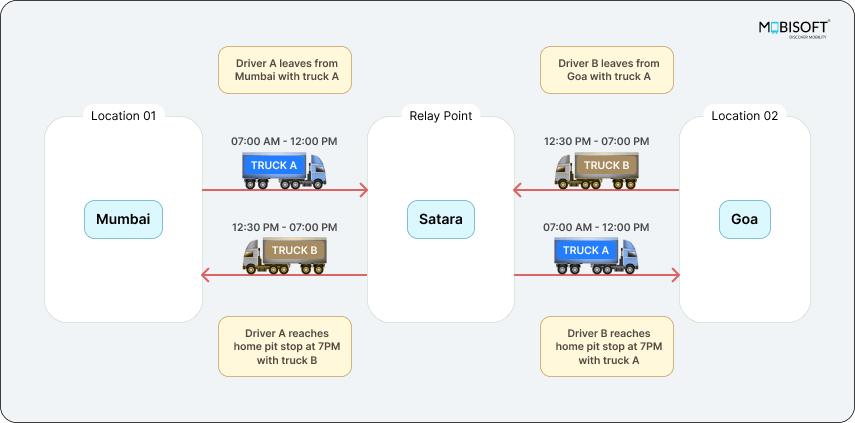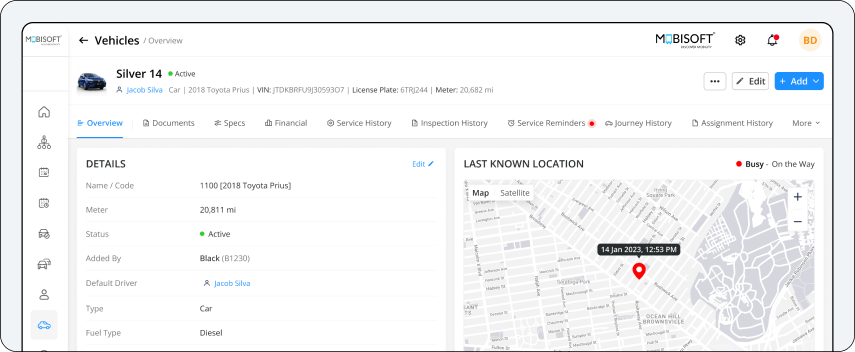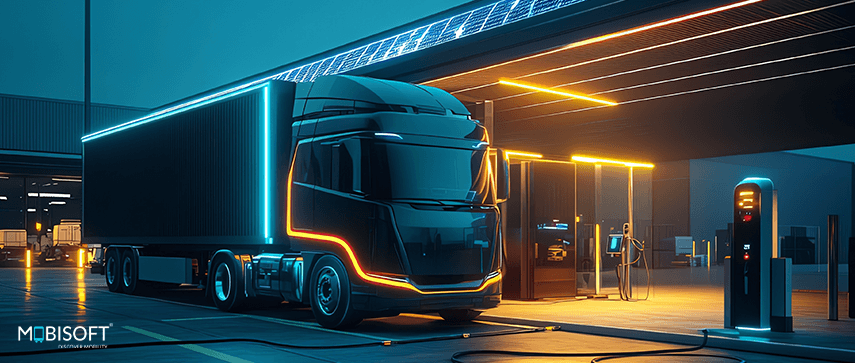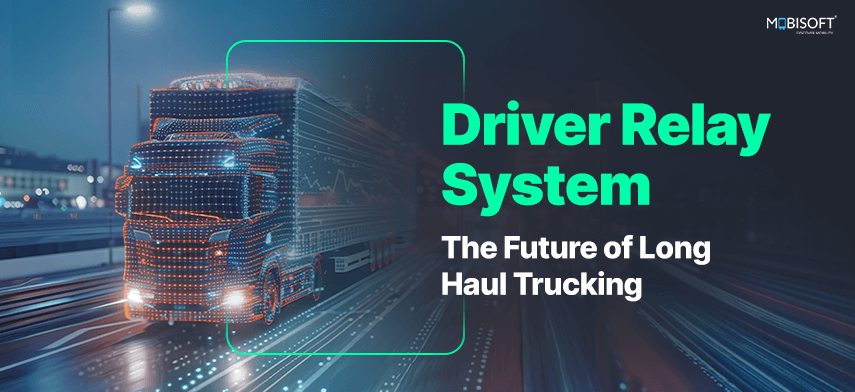Imagine receiving a call from an important client. A manufacturing giant is frustrated as their raw materials are delayed again and production has stopped. Every delay leads to lost time, extra costs, and unhappy partners.
In logistics, punctuality and reliability matter, especially in the world of long haul trucking, where precision is key. That’s where the Driver Relay System steps in. Instead of one driver hauling freight across thousands of kilometers, multiple drivers take shorter segments of the route. They switch at planned relay points, stay well-rested, and keep the truck in motion. The result? Safer roads, faster deliveries, and better resource use.

Why the Industry Needs Driver Relay Systems
Long Haul Trucking Faces Challenges That Demand Innovation.
Driver Shortage
The American Trucking Associations (ATA) estimates that the industry is short over 80,000 drivers. The gap could double by 2030. Annual turnover rates hover around 90%, making it hard to keep fleets fully staffed.
Growing Demand for Faster Deliveries
E-commerce sales grew 55% from 2019 to 2023. Customers now expect same-day or next-day delivery. Logistics teams must meet this growing demand in freight transportation systems without compromising driver safety.
Safety Concerns & Fatigue Management
Driver fatigue causes 13% of major truck accidents. While driving hours are regulated, traditional long haul routes often push drivers too far. That puts both the driver and everyone on the road at risk.

What is a Driver Relay System?
A Driver Relay System splits long routes into shorter stretches, usually around 250 to 300 km. Instead of one driver doing the whole trip, drivers switch at planned points. This keeps the truck moving without long stops and helps drivers stay rested and alert.
How It Works
- Route Segmentation: The journey is divided into manageable segments, optimizing truck fleet efficiency.
- Predefined Relay Points: Locations are strategically selected where drivers switch to reduce truck driver fatigue.
- Driver Handover: A fresh driver takes over, ensuring that rest times are respected and driver relay networks function smoothly.
By using a Truck Dispatch System, fleets can ensure smoother transitions and better coordination.
- Continuous Movement: The truck remains in motion longer, reducing overall long haul trucking times and ensuring faster deliveries.
Example Scenario
John starts in Los Angeles (LA) with Truck1.
Mike starts in San Francisco (SF) with Truck2.
Both meet at a relay point in Fresno, swap trucks, and return home.
- Both meet at a relay point in Fresno, swap trucks and return home.



Key Benefits
John & Mike sleep at home every night (no long haul stress).
Trucks move continuously, reducing downtime.
More efficiency, lower operational costs and faster deliveries.
Key Benefits of Driver Relay Systems
Reduced Transit Time
Relay systems help trucks stay on the move with fewer long breaks. This cuts the travel time by up to 50%. (Source: MIT Center for Transportation & Logistics) Companies like Rivigo have already seen success. They’ve completed trips like Delhi to Guwahati or Chennai in just three days instead of a full week (Source: Fortune India). This means businesses can meet delivery deadlines more easily, reduce waiting time for customers, and keep goods moving through the supply chain without delays.
To learn more about how companies optimize fleet efficiency, check out our case study on streamlining supply chain management with logistics solutions.
Compliance and Safety
Long hours on the road can be tough. Relay models help companies follow Hours of Service (HOS) regulations by giving drivers shorter shifts. That means less fatigue, better focus, and safer roads. It also shows that the company values both safety and its people, which builds trust and reduces the risk of accidents.
For more on regulatory compliance in the trucking industry, read our blog: How Will Digital Freight Matching Revolutionize The Trucking Industry?.
Improved Driver Satisfaction
Relay driving gives drivers a better work-life balance. They stay closer to home, spend more time with family, and avoid the stress of traditional long haul trucking. This keeps them happy and encourages them to stay longer with the company. Truck driver efficiency is greatly enhanced when drivers feel supported.
Cost Efficiency
Relay systems make better use of both time and fuel. With fewer stops and less idling, fuel costs drop, and maintenance needs go down. Companies experience significant savings, which can be reinvested into the business.
Companies seeking to improve their overall fleet efficiency can also look into fleet tracking software for added benefits. Find out more about fleet tracking software.
Increased Fleet Utilization
Since trucks remain operational for longer periods, companies can maximize the utilization of their assets, translating to higher revenues.

Also Read - Case Study : Streamlining Logistics with a Custom Load Matching Platform
Challenges of Implementing Driver Relay Systems
Coordination and Planning
Implementing a driver relay system requires meticulous coordination between multiple moving parts. Scheduling drivers at relay points while ensuring their availability at the right time is complex.
Infrastructure Needs
Relay points must be strategically located and adequately equipped with rest areas, fueling stations, and parking spaces. Developing such infrastructure requires significant investment, but it can significantly improve fleet management by optimizing delivery routes and reducing downtime.
Driver Management and Communication
Smooth handovers depend on clear communication between drivers, dispatchers, and relay hubs. Things can get missed or delayed without the right tools. Miscommunication can cause confusion at relay points, which can throw off schedules.
Resistance from Drivers
Traditional long haul drivers may resist transitioning to a relay model due to concerns over income stability, work routine changes, and trust in the system. Clear training and the right incentives help drivers adapt to the new relay system smoothly.
Regulatory and Compliance Challenges
Different states and countries have varying labor laws, driving hour limits, and tax regulations. Ensuring compliance across multiple jurisdictions while maintaining operational efficiency can be challenging for companies implementing driver relay systems.
Technology Dependence
Relay systems rely on GPS, AI-driven scheduling, and fleet management tools. Any technological failure, such as GPS downtime or software malfunctions, can disrupt relay coordination and lead to inefficiencies.
Cost of Implementation
Relay trucking can save money in the long run, but getting started isn’t cheap. Setting up relay points, investing in software, and training the team all come with upfront costs. Companies need to weigh these investments against the long-term benefits before making the switch.
The Role of Technology in Driver Relay Systems
Fleet Management Systems (FMS)
These systems track trucks, drivers, and fuel in real time, enabling companies to plan better routes and manage driver relay network solutions without delays.
GPS Tracking and Telematics
GPS shows where each truck is and how it’s being driven. This helps spot risky driving and keeps things safe and on track.
AI-Powered Scheduling and Route Optimization
AI finds the best relay points and matches them with available drivers. It also checks traffic and weather to choose smarter routes, contributing to logistics automation trends and making the process more efficient.
Predictive Analytics for Maintenance
By looking at past data, systems can predict breakdowns before they happen. This cuts downtime and avoids surprise repairs.
IoT-Enabled Driver Monitoring
Smart sensors keep an eye on driver fatigue and stress. This helps prevent accidents and ensures safety rules are followed.
Blockchain for Secure Logistics Management
Blockchain creates secure, unchangeable records of each trip and handover. It builds trust by keeping everything transparent.

The Future of Driver Relay Systems
As the logistics industry continues to evolve, Driver Relay Systems are poised to play an even more significant role in enhancing efficiency, safety, and sustainability. Emerging trends like AI-driven predictive maintenance and increased fleet utilization will help companies reduce costs and improve delivery time even further.
Workforce Transformation
As relay systems become more technology-driven, there will be a shift in the skill set required for drivers and fleet managers. Training programs will need to focus on digital tools, AI-based scheduling, and real-time fleet monitoring to equip professionals with the expertise needed in a modern relay-based logistics environment.
Increased Focus on Sustainability
With growing environmental concerns, the trucking industry will prioritize fuel efficiency and emissions reduction. Relay systems contribute to sustainability by minimizing idle time, optimizing fuel consumption, and supporting the integration of electric and alternative fuel vehicles into fleet operations.

Conclusion
The Driver Relay System is not just another logistics trend. It’s a practical response to today’s biggest trucking industry challenges, improving fleet efficiency, reducing driver fatigue, and ensuring faster, more reliable deliveries.
With AI, real-time monitoring, and smart route planning, this system helps businesses stay competitive and future-ready.
To keep up with industry trends, read about How Can Uber Freight Like Apps Benefit The Trucking Industry?
As a firm believer in leveraging technology to optimize logistics, I see the Driver Relay Model as a game-changer in modern transportation. The question is no longer if this model will become the industry standard, but how quickly businesses will adopt it to stay ahead.
If you’re ready to modernize your logistics operations, now is the time to explore how Driver Relay Systems can move your business forward.




 December 13, 2024
December 13, 2024


